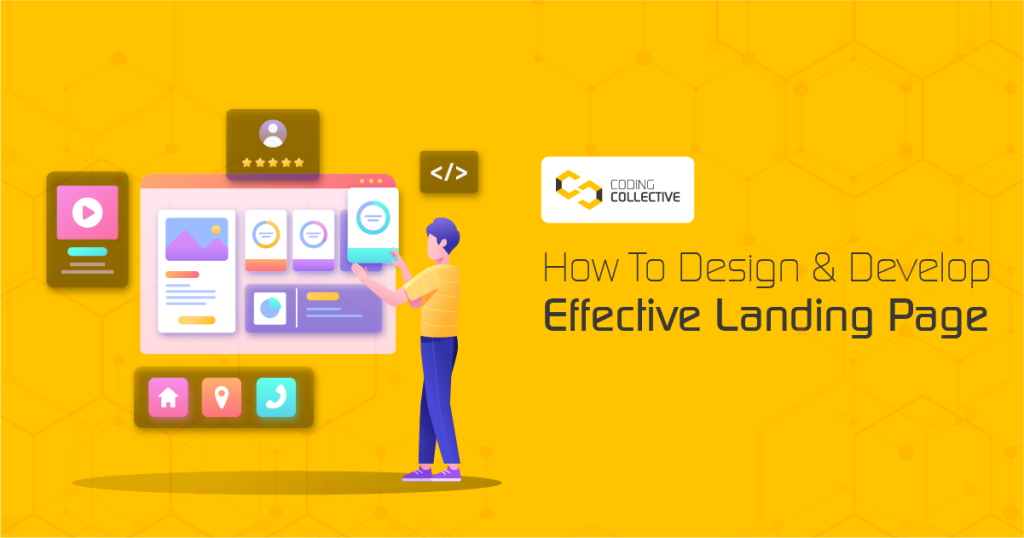
A landing page is a web page designed to drive conversions by persuading visitors to take a specific action, such as filling out a form or making a purchase. Effective landing pages can help businesses achieve their goals and grow their customer base. In this blog, we’ll discuss how to design and develop effective landing pages that convert visitors into customers.
Define Your Goals
Before you start designing your landing page, it’s important to define your goals. What do you want visitors to do when they arrive on your page? Do you want them to fill out a form, purchase, or download a resource? Once you’ve defined your goals, you can design your landing page with those goals in mind.
Keep it Simple
The design of your landing page should be simple and easy to navigate. Avoid cluttering the page with too much information or too many design elements. Use clear and concise language to communicate your message and make it easy for visitors to understand what you’re offering.

Use Attention-Grabbing Headlines
Your headline is the first thing visitors will see when they land on your page, so it’s important to make it attention-grabbing. Use clear and concise language that clearly communicates your message and value proposition. A strong headline can help visitors understand what your page is about and persuade them to take action.
Use High-Quality Visuals
High-quality visuals can help bring your landing page to life and make it more engaging for visitors. Use images or videos that are relevant to your message and that help communicate the benefits of your offering. Make sure your visuals are high-quality and optimized for web use to ensure fast loading times.
Focus on Benefits, Not Features
When designing your landing page, focus on the benefits of your offering, not just its features. Visitors want to know how your product or service will help them solve a problem or achieve a goal. Use clear and concise language to communicate the benefits of your offering and make it easy for visitors to understand how it can help them.
Use Social Proof
Social proof can help build trust with visitors and persuade them to take action. Use customer testimonials, reviews, or case studies to demonstrate the value of your offering and build credibility. Social proof can help visitors feel more confident in their decision to take action on your landing page.
Include a Strong Call to Action
Your call to action (CTA) is the most important element on your landing page. It’s the button or link that visitors will click to take action. Make sure your CTA is prominently displayed on the page and uses clear and concise language that communicates what visitors can expect after they take action.
Conclusion
Designing and developing effective landing pages requires a combination of strategy, design, and copywriting skills. By following these tips, you can create landing pages that are optimized for conversions and help your business achieve its goals. Remember to define your goals, keep it simple, use attention-grabbing headlines, focus on benefits, use social proof, and include a strong call to action. With these elements in place, you’ll be well on your way to creating effective landing pages that drive results for your business.

